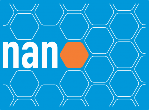Banca de DEFESA: JULIANA NAOMI YAMAUTI COSTA
Uma banca de DEFESA de MESTRADO foi cadastrada pelo programa.STUDENT : JULIANA NAOMI YAMAUTI COSTA
DATE: 29/01/2024
TIME: 14:00
LOCAL: Remoto
TITLE:
Ultra-dense vertical meshed electrochemical chips enable single-response multiplexing
PAGES: 105
BIG AREA: Ciências Exatas e da Terra
AREA: Química
SUBÁREA: Química Analítica
SPECIALTY: Eletroanalítica
SUMMARY:
This project aims to develop label-free electrochemical biosensors (LEBs) with the potential to ensure rapid and affordable diagnosis of diseases in clinical settings, including laboratories, hospitals, or point-of-need scenarios. To achieve this goal, we have designed devices to meet two crucial requirements: (i) real-world applicability at a low cost and (ii) high testing capacity, as discussed below.
Initially, by using microfabrication methods and vertical film engineering, ultra-dense chips were constructed, combining reproducibility, large-scale manufacturing compatibility, and high resolution (the ability to generate layouts from macro to ultramicroelectrodes) at a low cost. Exploiting the unique chip design, another breakthrough described in this project involved the unprecedented implementation of single-response multiplexing (SERM) analyses in LEBs. These multiplexed analyses could be performed from a single square wave voltammetry (SWV) scan, enabling the use of a single-channel portable potentiostat. As an additional advantage, these systems were based on spatial isolation of samples in distinct regions of the working electrode (WE), allowing individual modification of WEs and avoiding interference between the redox probes used for generating electrochemical responses.
Each sensor was based on only two electrodes consisting of vertical thin films of Au in a three-dimensional mesh separated by a dielectric, the negative photoresist SU-8. This configuration resulted in the production of ultra-dense chips, with dozens of sensors per wafer (glass), significantly reducing the final cost of the sensors. From an industrial perspective and considering 60 sensors per wafer, the unit cost of the sensors was estimated at R$2.84. The SERM analyses were achieved through two strategies: (i) the use of different redox probes (multiplexing method) and (ii) the pioneering use of quasi-reference electrodes (QREs) made of different materials along the same SWV measurement (duplex method). The multiplexing method allowed the monitoring of up to 3 samples using different redox probes, namely potassium hexacyanoferrate [Fe(CN)6]3–/4–, ferrocenemethanol (FcMeOH), and hexaammineruthenium [Ru(NH3)6]3+, generating current peaks at different potentials. Regarding the duplex method, it enabled the analysis of 2 samples using only the [Fe(CN)6]3–/4– probe. This was possible due to the use of QREs consisting of materials with distinct work functions, Au and Ag/AgCl. Thus, current peaks were obtained at specific potentials related to each QRE.
As a proof of concept, we evaluated the sensor performance as LEBs using a peptide as a recognition element of COVID-19 IgG antibodies. For standard IgG samples, using the SERM multiplex method, it was possible to monitor 3 biointeraction events in a single SWV analysis, distinguishing positive and negative samples. Using the SERM duplex method, detection limits of 8.0 (Au QRE) and 83.1 ng mL–1 (Ag/AgCl QRE) were obtained. By employing this method, we managed to double the processing capacity and achieve 100% accuracy for COVID-19 screening from patient serum samples. As part of the prospective vision of this project, we envision that the platform has the potential to be widely applied in high throughput testing strategies, reducing diagnostic time for the evaluation of different samples (as demonstrated here) and, in the future, for different biomarkers aiming to increase clinical accuracy or even detect coexisting diseases with similar symptoms.
COMMITTEE MEMBERS:
Presidente - Interno ao Programa - 007.041.553-62 - RENATO SOUSA LIMA - UNICAMP
Membro Titular - Examinador(a) Externo à Instituição - LAÍS CANNIATTI BRAZACA - USP
Membro Titular - Examinador(a) Externo à Instituição - PAULO ROBERTO BUENO - UNESP
Membro Suplente - Examinador(a) Interno ao Programa - 1544341 - WENDEL ANDRADE ALVES
Membro Suplente - Examinador(a) Externo à Instituição - RAFAEL FURLAN DE OLIVEIRA - CNPEM
Membro Suplente - Examinador(a) Externo à Instituição - PAULO AUGUSTO RAYMUNDO PEREIRA




